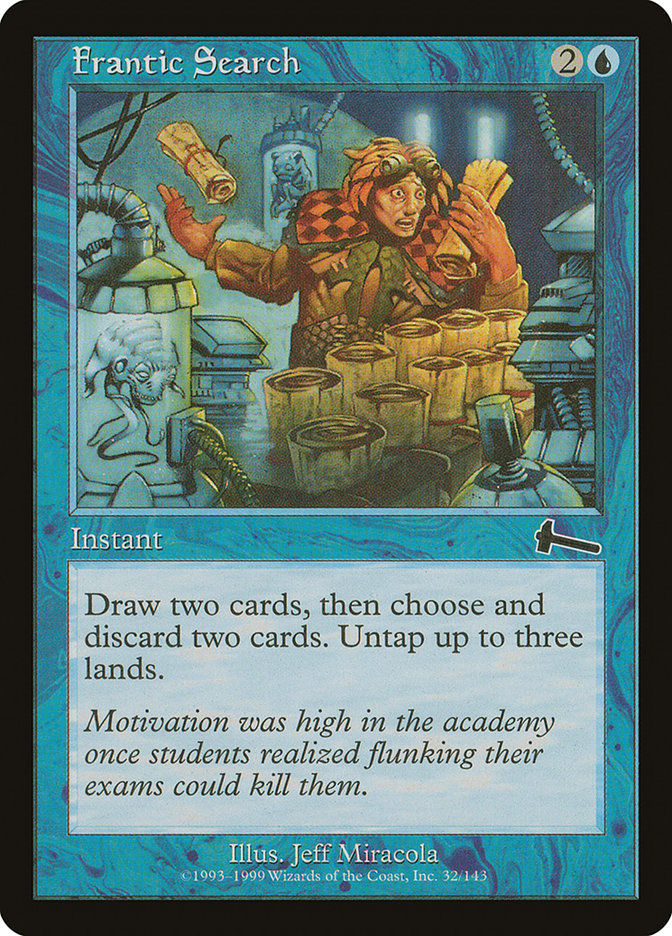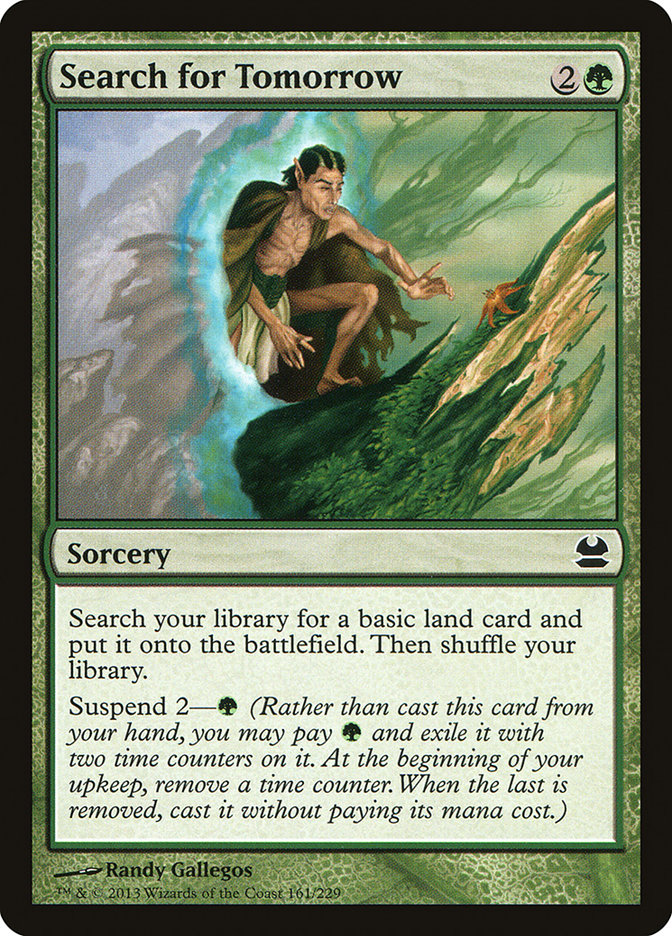The Battle for Zendikar preview season is upon us. The excitement builds over the new cards, spoiled and as-yet unspoiled. Even more excitement
rages over the announcement that you will, like with the original Zendikar, get to go on expeditions to new and undiscovered (in their full art form) lands.
It’s a great idea from a marketing standpoint. Combined with insanely powerful Eldrazi and other interesting cards, it’s clearly going to be a very popular
set. Like many of you who like to collect cards in addition to playing with them, I’m going look forward to trying to get my hands on those special new
versions. Of those which have been officially spoiled so far, that Steam Vents is my favorite. Something about how the swirl of the rock makes it look like
a portal to another dimension (a Stargate?) just draws me in. They’ve only officially spoiled eight of the 25 so far, although we can extrapolate a few
more of them. I can’t wait to see the rest.
Speaking of lands, discussion of Library of Alexandria has ramped up on a few of the boards, to include the official forums. I’m not sure about the genesis of it, but the
simple question (which has of course turned into an argument) is “Why is it still banned?” The problem with the question is the word “still,” the
implication that something has changed format-wise which would lead us to unban it. Nothing that would even remotely lead us to consider Library of
Alexandria has changed. Tossing out the “still” gives us “Why is it banned?” The simple answer is that it violates the Perceived Barrier to Entry
principle, which you can read all about in our philosophy document. Library of
Alexandria is a good card (check out that thread-you’ll see that opinions widely vary on how good), and if it were commonly available, lots of
folks might play it. That’s not why it’s on the list. We simply don’t want folks to feel like they need cards that are as rare and expensive as Library of
Alexandria in order to play in the format-the part and parcel of the PBtE category. Because of the availability of cards printed in the 21st century, it’s
highly unlikely that new cards will ever be added to the banned list for that reason. New cards are simply way more available than they were in 1994. Price
itself isn’t a factor; there are some expensive cards that aren’t banned, but they either don’t actually get played that much or have more
reasonably-priced functional equivalents or near-equivalents (like Imperial Seal and Vampiric Tutor). The iconic nature and association with Vintage as a
hyper-expensive format to play is what keeps the PBtE cards there. Just banning cards based on price is problematic because secondary markets shift all the
time; keeping up with that is outside the scope of what the Rules Committee wants to do (and needs to do vis-a-vis the format).
Back to Library of Alexandria: If it were reprinted in an upcoming set (which we know it won’t be because it’s on the Reserve List), it would likely get unbanned. We’d probably
see it in many decks, although not all. I liken it to Solemn Simulacrum-a card that might be omnipresent in the format but doesn’t do anything to warp,
centralize, or damage it. Library of Alexandria in its current form is not a card that would damage games, but it’s a card that would damage the format if
it were played.
The expeditions in Battle for Zendikar got me thinking about spelunking around the various caverns of card lists to find hidden treasures. I’ve
put together previous articles on these hidden gems (here,here, and here), but it’s been quite a while and maybe in the near
future-certainly post BFZ release-I’ll do a few more. Although we’ll talk about some of my favorites (will that make them revealed gems?), what I want to
talk about today is the process by which we can find hidden gems. By their nature, we have to dig them out of the mountainside or deep earth. If you just
start hacking away at the rocks, you might get lucky, but a more focused approach will waste less of your time and yield better results.
Keyword Searches
I’m using the term keyword here not in the Magic mechanics sense but in the scholastic sense. I primarily use two databases: Gatherer and Magic Cards Info. Both have their strong
points, so it’s mostly a taste choice for you. Both have simple and advanced searches. I tend to use Gatherer for simple searches and MCInfo for the
advanced because it has more of the kind of choices I make when doing searches, such as being able to put in your commander’s color identity. I also find
it more intuitive to use. They’ve just added some “Is” pull-down menus for Special Types (stuff like “is a permanent” and “is a vanilla creature”); Card
Face/Border (“is an old card” and “is a future card”); Categories (“is a funny card” and “is a promo card”); Banned/Restricted (self-explanatory, by
format).
Your search terms can be as simple or as complicated as you like. I suggest starting with big pictures and narrowing. Both databases give you the
opportunity to search by all the things you want to search by, like types and power/toughness. I find my most useful searches-especially when finding cards
off the beaten path-are via rules text. Just looking at some of the recent searches I’ve done include “destroy all creatures,” “any number of target
creatures,” “whenever a creature you control attacks” and “for each nonbasic land.”
What keyword searches you do and how you narrow them depend on what you’re looking for. Broader or common searches (the aforementioned “destroy all
creatures” or “creatures with toughness 7”) are going to reveal hidden gems as a collateral benefit. You know Wrath of God and Damnation will come up on
the list for the former; what you’ll uncover is stuff you’ve never heard of like Do or Die or Forced March. As a side note, there are 122 creatures with
toughness exactly 7, from Arachnus Spider all the way to Yavimaya Ancients. When you do a search on an esoteric term, like banding, you’re going to find
way more stuff that no one has ever heard of (41 cards, by the way).
Once you have a result list, you can either just scroll down it or you can narrow the search even more. I would simply view each card on the banding list.
Looking through all 122 creatures with toughness 7 is probably a good deal of fun, but since you’re working on a particular deck, you want to kick off the
raft stuff that you can’t play (assuming, of course, you’re at the point where you’ve already chosen a commander or a color identity). For some reason, you
want to play creatures with toughness 7 in your Lazav, Dimir Mastermind deck. Narrowing the search to color identity blue and black (which will give you
artifact creatures, by the way-like Myr Battlesphere) gives you 35 choices. Then you can zero in on something awesome like Baleful Force or Nemesis of
Reason. Using the banding example, you might want to find the things that grant banding, not the ones which already have it. Limiting your search to
non-creatures would help, but that would leave out creatures like Soraya the Falconer, which gives banding to Birds.
Using the rules text of cards you already know about can help you find other cards which do similar things. Let’s say I want to find all the creature-lands
for the aforementioned Lazav deck. I know that Celestial Colonnade (outside my colors, but I know its name) is a creature-land, so I search on it, then
copy/paste the relevant term into the engine. I might choose “becomes a,” although I suspect that might give us too many results (but I’m going to make
sure I search on only lands here) or I could go with “it’s still a land.” The first search pulls up ten cards: Blinkmoth Nexus, Creeping Tar Pit, Dread
Statuary, Faerie Conclave, Inkmoth Nexus, Mishra’s Factory, Mutavault, Spawning Pool, Stalking Stones, and Thespian’s Stage. The latter leaves off Stalking
Stones and Thespian’s Stage.
Understanding how Magic cards are templated also helps narrowing your search. One of my recurrent messages is “stay in school and play your Fogs.” Since
Gatherer searches can’t help you with the former, let’s focus on the latter. We know that Fog effects prevent combat damage. If we search on “prevent all
combat damage,” we get 97 cards, some of which involve preventing combat damage to the creature itself. If we look at Fog, we see that it adds “that would
be dealt this turn.” This cuts us down to 35 cards and reveals unheard of cards like Glacial Crevasses (damage prevention in red!) or Undergrowth, which
now that I’ve seen it, I’m going to have to work it into a deck. We don’t want to necessarily discount our first list. 97 cards isn’t too much to scan. It
reveals interesting choices like Dolmen Gate and Heroism.
Keyword searches will open up new things to you based on knowing what it is you want to do and how that’s like things you’ve already done. It’s the
strongest method because you have a referential starting point-it’s like drilling for oil in Texas. You know that there is some over there, you’re
just looking to see if there is some over here as well. There are also ways of taking somewhat wilder swings at finding hidden gems.
Looking at Old Card Sets
What applies as old depends on how long you’ve been playing. If Ice Age was your first set, you have a different view than if Khans of Tarkir was your first. Still, reviewing old lists of cards by set or block gives you the opportunity to find things you’ve either never
heard of or have forgotten. Sure, I remember the Weatherlight Prerelease, but I’m sure I’d struggle to name thirty cards from the set right off
the top of my head. Using Weatherlight as an example, you might already know Winding Canyons or Abeyance, but there are many others no one is
playing that you might be able to make use of, like Null Rod, Urborg Justice, or one of my favorites, Debt of Loyalty.
Using the database engines are probably still the right way to look at card sets when you’re on the computer/tablet/smart phone. You might get a printed
list to read while you’re sitting by the pool or something, but 1) it’s the 21st century and 2) if you’re printing out more than a list of card names, it
gets unwieldy to handle. Electronically, you can still sort on whatever functions you want. The way you look at the list once again depends where you are
in the process. If you’re trying to find something which does a particular thing, you narrow on types or abilities. In an earlier stage, or if you’re just
looking for fun to see what’s there, you simply start top down with the list. Seeing a card like Firestorm might suggest a deck or strategy (“if I could
only draw 40 cards, I can kill everyone for one red”).
Scanning card sets with which you’re not familiar is probably the most fun way of finding hidden gems. Part of the joy of the game of Magic is discovery,
and this is discovery in its most raw form.
Pay Attention to Cards Other People Are Playing
This seems obvious, but I’m not talking about admiring their Eternal Witness or even the Firestorm that just killed everyone. I’m suggesting looking at the
cards other people are playing which might not have had an impact on the game in which you see them. Lines of inquiry lead you to interesting places. Ask
the question “I wonder why she chose to play that?” Maybe also, “Hey, why did you play that card?” You’ll easily find hidden gems when that Debt of Loyalty
turns a game around or Breathstealer’s Crypt makes life interesting for everyone, but sometimes a card choice doesn’t do anything that you can see. You
might get that Corrosion slowly eats away the artifacts in play, but it makes more sense when the person reveals they’re playing it with Ashnod’s
Transmogrant, Liquimetal Coating, or Mycosynth Lattice.
You can also scan the websites to look at the other cards that people are playing. Many of the popular forums have Hidden Gems threads in which people
discuss cards they’ve discovered. It takes away some of the fun of finding them for yourself, but it can also be a launching ground for you to find new and
exciting things.
One of the great joys of Commander as a format is having available to you, both as a deckbuilder and a player, nearly all the cards ever printed in Magic.
There are 62 cards banned in Commander (25 from our starting point on the Vintage list plus 37 we’ve added), under one half of one percent. From the rest,
there are still new vistas for you to explore, veils to part, and treasures to find. Get digging!
This Week’s Deck Without Comment is Children of a Greater God. I’ve added a new feature, listing the deck’s latest update.
Commander:
Child of Alara
Latest update (2015 6 July)
In:
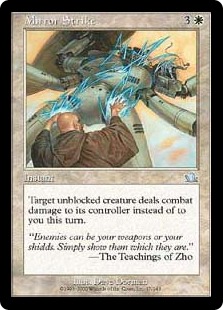

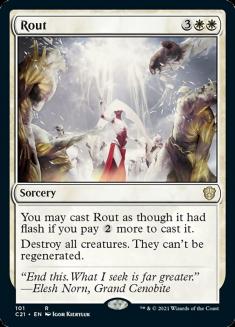
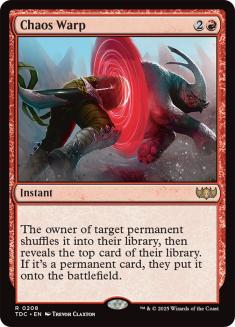

Out:
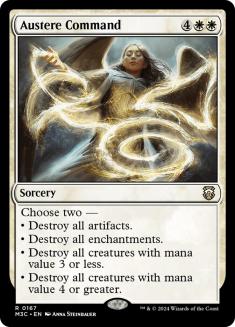

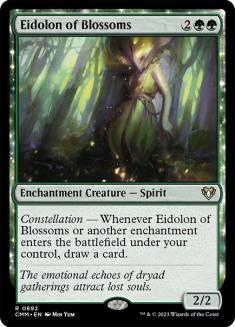
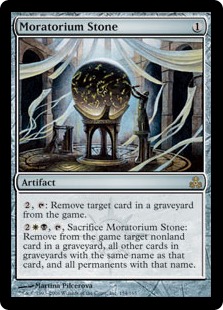

Creatures (37)
- 1 Darksteel Colossus
- 1 Solemn Simulacrum
- 1 Withered Wretch
- 1 Wood Elves
- 1 Eternal Witness
- 1 Yavimaya Elder
- 1 Crusading Knight
- 1 Coiling Oracle
- 1 Stuffy Doll
- 1 Seedguide Ash
- 1 Sapling of Colfenor
- 1 Terastodon
- 1 Ulamog, the Infinite Gyre
- 1 Sun Titan
- 1 Predator Ooze
- 1 Deathrite Shaman
- 1 Tajic, Blade of the Legion
- 1 Nylea, God of the Hunt
- 1 Thassa, God of the Sea
- 1 Heliod, God of the Sun
- 1 Purphoros, God of the Forge
- 1 Erebos, God of the Dead
- 1 Burnished Hart
- 1 Ephara, God of the Polis
- 1 Mogis, God of Slaughter
- 1 Karametra, God of Harvests
- 1 Xenagos, God of Revels
- 1 Phenax, God of Deception
- 1 Iroas, God of Victory
- 1 Keranos, God of Storms
- 1 Kruphix, God of Horizons
- 1 Athreos, God of Passage
- 1 Pharika, God of Affliction
- 1 Dack's Duplicate
- 1 Soul of New Phyrexia
- 1 Zurgo Helmsmasher
- 1 Dualcaster Mage
Planeswalkers (2)
Lands (38)
- 7 Forest
- 3 Plains
- 1 Reflecting Pool
- 3 Swamp
- 3 Mountain
- 3 Island
- 1 Volcanic Island
- 1 Underground Sea
- 1 Tropical Island
- 1 Scrubland
- 1 Savannah
- 1 Plateau
- 1 Badlands
- 1 Minamo, School at Water's Edge
- 1 Overgrown Tomb
- 1 Temple Garden
- 1 Godless Shrine
- 1 Stomping Ground
- 1 Breeding Pool
- 1 Bant Panorama
- 1 Grixis Panorama
- 1 Naya Panorama
- 1 Evolving Wilds
- 1 Command Tower
Spells (22)
- 1 Darksteel Ingot
- 1 Kodama's Reach
- 1 Akroma's Vengeance
- 1 Decree of Pain
- 1 Scrabbling Claws
- 1 Explosive Vegetation
- 1 Nature's Lore
- 1 Survival of the Fittest
- 1 Phyrexian Reclamation
- 1 Greater Good
- 1 Skyshroud Claim
- 1 Mirror Strike
- 1 Rout
- 1 Damnation
- 1 Harmonize
- 1 Prismatic Omen
- 1 Grim Discovery
- 1 Chain Reaction
- 1 Cultivate
- 1 Chaos Warp
- 1 Chromatic Lantern
- 1 Rise of the Dark Realms

Check out our awesome Deck List Database for the last versions of all my decks:
ADUN’S TOOLBOX;
ANIMAR’S SWARM;
AURELIA GOES TO WAR;
CHILDREN of a LESSER GOD;
DEMONS OF KAALIA;
EREBOS and the HALLS OF THE DEAD;
GLISSA, GLISSA;
HELIOD, GOD OF ENCHANTMENTS;
DREAMING OF INTET;
FORGE OF PURPHOROS;
KARN, BEATDOWN GOLEM;
HALLOWEEN WITH KARADOR;
KARRTHUS, WHO RAINS FIRE FROM THE SKY;
KRESH INTO THE RED ZONE;
LAVINIA BLINKS;
LAZAV, SHAPESHIFTING MASTERMIND;
ZOMBIES OF TRESSERHORN;
MELEK’S MOLTEN MIND GRIND;
MERIEKE’S ESPER CONTROL;
THE MILL-MEOPLASM;
MIMEOPLASM DO-OVER;
NATH of the VALUE LEAF;
NYLEA OF THE WOODLAND REALM;
OBZEDAT, GHOST KILLER;
PURPLE HIPPOS and MARO SORCERERS;
ZEGANA and a DICE BAG;
RITH’S TOKENS;
YOU DID THIS TO YOURSELF;
RURIC THAR AND HIS BEASTLY FIGHT CLUB;
THASSA, GOD OF MERFOLK;
THE ALTAR of THRAXIMUNDAR;
TROSTANI and HER ANGELS;
THE THREAT OF YASOVA;
RUHAN DO-OVER;
KARADOR DO-OVER;
KARRTHUS DO-OVER
If you’d like to follow the adventures of my Monday Night RPG group (in a campaign that’s been alive since 1987 and is just now getting started with a new saga called “The Lost Cities of Nevinor”), ask for an invitation to the Facebook group “Sheldon Menery’s Monday Night Gamers.”

